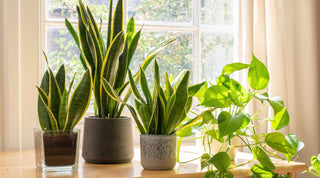Purple flowers bring a sense of elegance and tranquility to any space, whether indoors, outdoors, or in your garden.
Their rich hues can create stunning focal points and complement a wide range of other colors. In this blog post, we'll explore some of the best purple flowers to grow indoors, outdoors, and in your garden, along with tips for their care.
Best Purple Flowers for Indoor Growth
- Light: Bright, indirect light.
- Watering: Keep the soil moist but not soggy. Use lukewarm water and avoid getting the leaves wet.
- Soil: Well-draining potting mix, ideally formulated for African violets.
- Temperature: Prefers temperatures between 65-75°F (18-24°C).
- Light: Full sunlight.
- Watering: Water sparingly, allowing the soil to dry out between waterings.
- Soil: Well-draining, sandy soil.
- Temperature: Thrives in cooler indoor temperatures, ideally between 50-60°F (10-15°C) at night.
- Light: Indirect sunlight.
- Watering: Water once a week, allowing the potting medium to dry out slightly between waterings.
- Soil: Specialized orchid mix with good aeration.
- Temperature: Prefers temperatures between 60-80°F (16-27°C).
Best Purple Flowers for Outdoor Growth
- Light: Full sunlight.
- Watering: Keep the soil consistently moist but well-drained.
- Soil: Rich, well-draining soil.
- Temperature: Hardy in USDA zones 5-9.
- Light: Full sun to partial shade.
- Watering: Water regularly, especially in dry periods.
- Soil: Well-draining soil.
- Temperature: Hardy in USDA zones 3-9.
- Light: Full sunlight.
- Watering: Water sparingly, allowing the soil to dry out between waterings.
- Soil: Well-draining, sandy soil.
- Temperature: Hardy in USDA zones 5-9.
Best Purple Flowers for Garden Growth
- Light: Full sunlight.
- Watering: Water regularly until established, then only during dry spells.
- Soil: Well-draining soil.
- Temperature: Hardy in USDA zones 4-9.
- Light: Full sun to partial shade.
- Watering: Keep the soil moist but not waterlogged.
- Soil: Well-draining, fertile soil.
- Temperature: Hardy in USDA zones 3-9.
- Light: Full sunlight.
- Watering: Water regularly, keeping the soil moist.
- Soil: Well-draining soil, preferably with a slightly acidic to neutral pH.
- Temperature: Hardy in USDA zones 3-10.
Conclusion
Purple flowers can add a touch of elegance and charm to any space, whether you're growing them indoors, outdoors, or in your garden. By selecting the right types of purple flowers and providing them with the appropriate care, you can enjoy their vibrant beauty year-round. From the delicate African violet to the striking wisteria, there's a purple flower to suit every gardener's needs and preferences. Happy gardening!



